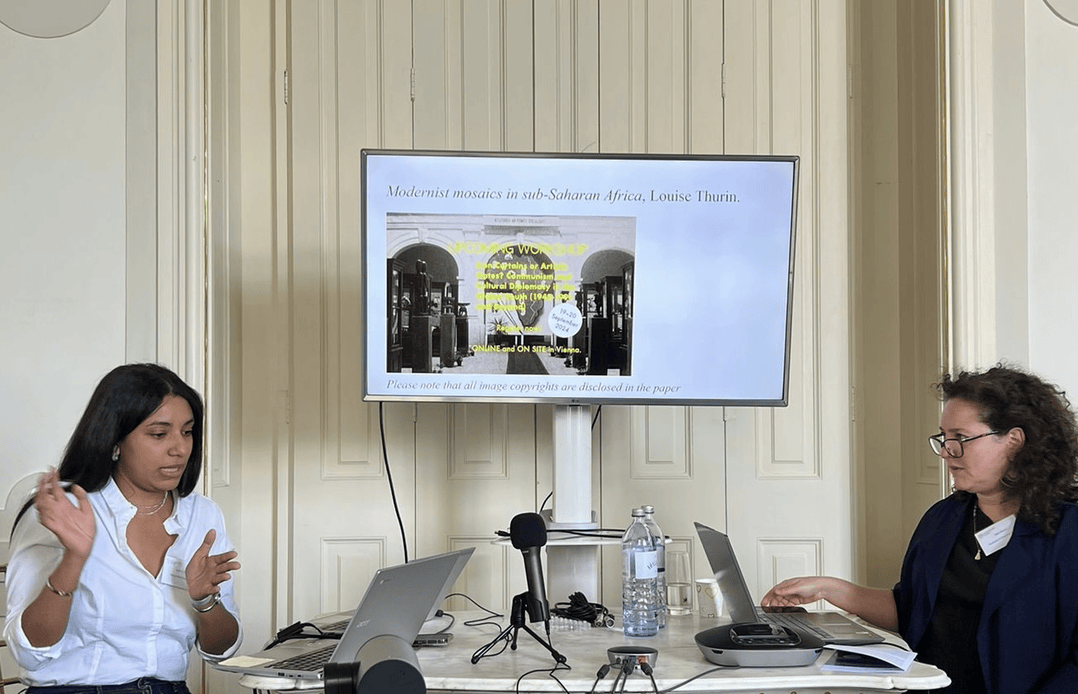Research & Curating
Academia
Academia
Monumental Modernist Mosaics in Cold War Sub-Saharan Africa
Research article
Mosaic, as a medium, is often assumed to be absent from the mondes noirs [Black Worlds]—and by extension, absent from the imaginations and aesthetic practices of those who inhabit them. This misconception, however, obscures a remarkable but understudied visual works: monumental mosaics in post-colonial sub-Saharan Africa. These works—integrated into the facades of public buildings, universities, cultural centers, and other civic architectures—emerged at the intersection of decolonization and Cold War internationalism. Produced in collaboration with socialist states like the USSR and North Korea, and with Western colonial powers or partners, these mosaics were never merely ornamental. They formed part of a broader aesthetic and ideological project, shaped by the diaspora of Modern Architecture and the development of “Third World modernism”, the aspirations of newly independent African nations during the "Suns of Independence" era, and some, by the legacy of Communist public art, Social realism and Soviet modernism.
It is organized around three central investigations:
(I) the visual and political representation of Africa and Africans in three key Soviet mosaics located in Moscow—at the Africa Institute and in the Moscow Metro;
(II) the production of mosaics in Red Africa during the Cold War, with particular attention to Soviet and North Korean collaborations in countries such as Guinea, Angola, Mali, and Burkina Faso;
(III) the complex and often opaque dynamics of artistic mentorship, authorship, and transmission of mosaic-making techniques between foreign and local artists with examples in Ghana and Nigeria, alongside the visual imprints of liberal or non-socialist regimes in African public mosaics in Benin and Uganda.
Transversally, this offers a critical examination of how African women are represented in these mosaics, attempting to unveil the complexity of these opaque images “fighting two colonialisms”: Exoticism and the male gaze. The research also explores how recurring Afro-Red heroic figures—such as the African Prometheus or the Black Spartacus—function as visual archetypes transplanted from European and Soviet revolutionary mythologies into African liberation iconographies. These tropes, while claiming a universalist meaning, are refracted through local contexts in ways that reveal both ideological alignment and symbolic friction.
This research article, started in 2022, appears to be the first comprehensive review on the subject.
The first draft of the article was kindly supported by Marylène Dalle in 2023.
Workshop participation
Modernist Mosaics in Sub-Saharan Africa was presented for the first time at the workshop lron Curtains or Artistic Gates? Communism and Cultural Diplomacy in the Global South (1945-1991 and Beyond), organized by the Universität Wien at the Upper Belvedere (Vienna) in September 2024.
Panel chair: Noit Banai, Academy of Fine Arts, Vienna.
Featured in Hamida Sivac’s report of the event on Third Text. Critical Perspectives on Contemporary Art and Culture.
Maison de la Mosaïque contemporaine
From September to December 2025, I assisted the association M comme Mosaïque and its exhibition and training venue, the Maison de la Mosaïque Contemporaine in Paray-le-Monial (Saône-et-Loire, Bourgogne), dedicated to the promotion of contemporary mosaic art.
This engagement not only deepens my understanding of mosaic as a living practice but also strengthens the experiential and material dimension of my research on monumental modernist mosaics in postcolonial Africa.
The Maison de la Mosaïque Contemporaine is an Atelier d’art de France, and its courses are Qualiopi-certified, ensuring high standards in artistic education.
Connaissance des arts, Paray-le-Monial dynamise la mosaïque contemporaine, 2020 & Le Journal de Saône-et-Loire, Paray-le-Monial, les mille facettes de la “Cité mosaïque”, 2022.
Curating
Curating
Prends soin de toi
Exhibition project on Beauty studies
Exhibition entitled Prends soin de toi.
Co-curator : Anaïs Auger-Mathurin.
With Zionsay Agency.



